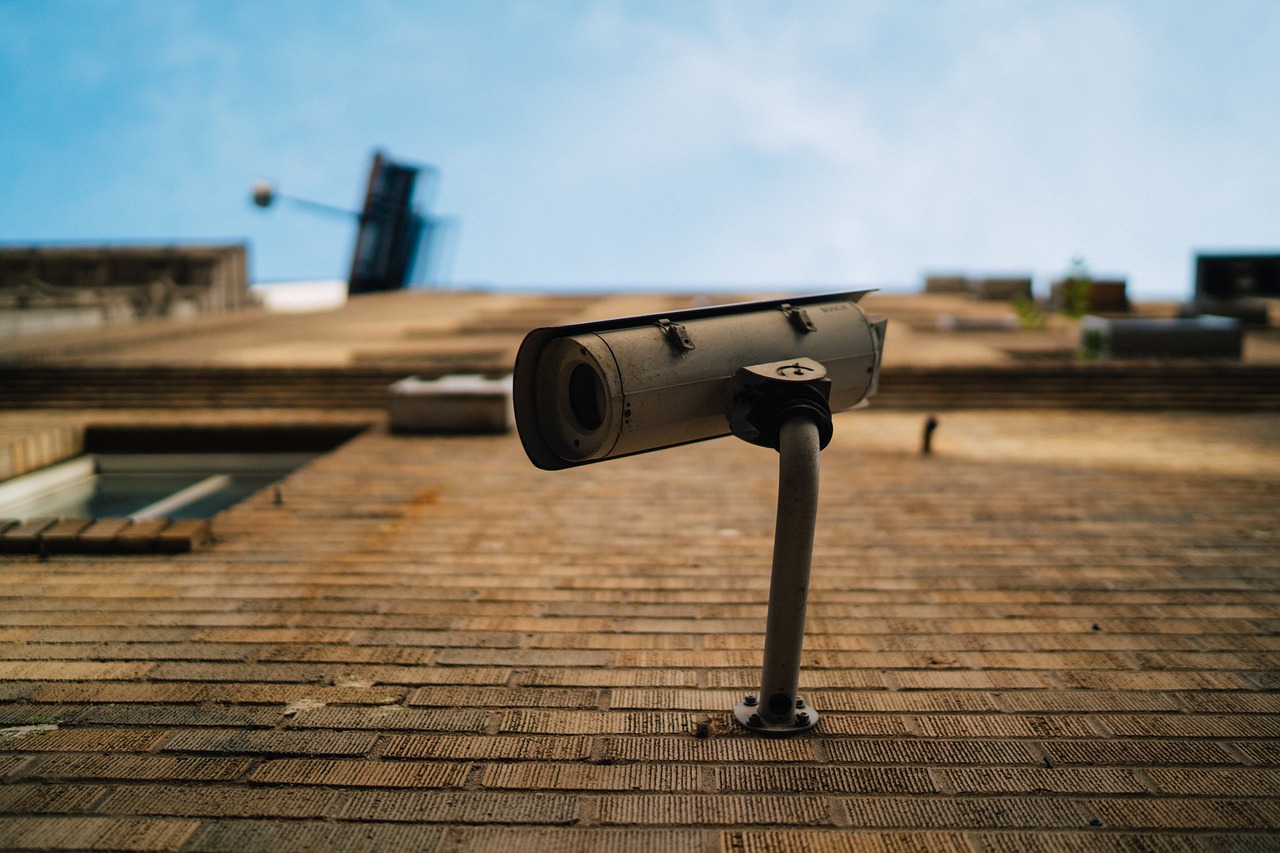The 5 Types of Stalkers (and How to Stay Safe)

There are 5 types of stalkers and research on stalking behavior has found that many suffer from mental illness, including personality disorders, substance abuse, and delusional disorder. Stalking behavior can be defined as the repeated harassing, tracking, or following of a person. The behavior is intended to cause emotional distress or physical harm.
Advocacy groups such as Safe Horizon seek to support victims by educating them about stalking behavior, informing them of their rights, and providing safety tips. Safety Horizon offers a 24-hour hotline for victims who may need assistance.
What we read and see in the media would have us believe that women are almost exclusively the victims of stalking. That may be because women are more likely to die at the hands of their stalkers than men. According to the CDC, 1 in 6 women and 1 in 17 men have been stalked at some point in their lives.

While men are nearly 3 times more likely to stalk victims, women are not immune to this behavior. Paul Mullen, an Australian psychiatrist, identified 5 types of stalkers in a 1999 study. He studied the behavior of 145 diagnosed stalkers with the goal of gaining insight into this antisocial behavior. 115 of the subjects were men. 30 were women.
As a result of his research, Mullen identified the following types of stalkers.
The Rejected Stalker
The rejected stalker commences stalking after the end of a relationship. This group was the largest of the five in Mullen’s study. They were either seeking to reestablish the relationship or were seeking to enact revenge against the person they felt had scorned them.
This type of stalker’s behavior tends to last the longest due to the obsessive nature of the perpetrator, and they also are the most dangerous. Mullen’s research suggests the majority of rejected stalkers suffer from personality disorders. A small minority meet the criteria for delusional disorder.
The Intimacy Seeking Stalker
The second largest group was the intimacy-seeking stalker. This type seeks an intimate relationship with their victims. Half of these subjects truly believed their feelings of affection were mutual. This type has a high incidence of delusional disorder.
The Incompetent Stalker
The hallmark characteristic of the incompetent stalker is poor social skills. In other words, they are motivated to pursue their victim because they have a poor understanding of acceptable social interactions. They act in an inappropriate manner toward those they pursue.

The incompetent stalker believes that his or her actions will lead to an intimate relationship.
A developmental disability could cause an individual to engage in stalking behavior because they may not comprehend social cues or understand acceptable interpersonal behavior.
The Resentful Stalker
The resentful stalker sets out with the goal of frightening or distressing the victim. This typically is the result of a perceived slight or insult to the stalker. The motive here is to gain some semblance of revenge; and this group is likely to make direct threats to their victims.
The Predatory Stalker
Predatory stalkers are in preparation for landing a sexual assault. This type can arguably be considered the most dangerous of the 5 types, and was the smallest of the 145 sample in Mullen’s study. This group was made up exclusively of men.
Predatory stalkers aren’t likely to openly harass a person. Rather, they use methods such as surveillance and tracking to keep tabs on the victim.

Victims of stalking have options to protect themselves, but they aren’t foolproof and can even “backfire”, placing them at increased risk.
Mental Illness in Stalkers
Borderline Personality Disorder
Borderline personality disorder (BPD) is an enduring mental health condition that is difficult to treat. Approximately 1.4 percent of Americans suffer from this disorder. Women represent the majority of individuals who have BPD.
The essence of BPD is an unstable sense of self. People with borderline personality feel extreme emotions, and their moods can shift rapidly. Typically, these mood swings are triggered by the real or imagined rejection by someone.

Those with borderline personality struggle to develop and maintain healthy relationships. Their shaky sense of self and fear of abandonment lead to relationship conflict. They can appear attention-seeking and require a lot of reassurance- to be ensured that the person they care about won’t leave.
People with BPD tend to see the world as black and white. They will view people in their lives as either amazing or wretched, idealizing the person one minute and flipping to disdain the next. There is no gray in their relationships with others.
Of the rejected stalkers studied, approximately 50% met the criteria for BPD. It would make sense that such a high percentage suffer from this disorder, since many of this type begin stalking their victims after the breakup of a relationship. Their behavior, in part, is an attempt to regain attention they’ve lost.
Narcissistic Personality Disorder
Narcissistic personality disorder (NPD) is also relatively common in stalkers. Individuals with NPD tend to be grandiose, having an inflated sense of their importance. Because of deep-rooted insecurity, they have a need for constant admiration and they lack of empathy.
Narcissistic stalkers are calculating in their selection of a victim. Generally, they will choose someone who is vulnerable to being charmed or seduced and they use psychological strategies to maintain control.
How do you know if a stalker is of the narcissistic variety? They commonly do the following:
- Exaggerate their accomplishments and successes
- Use others to get what they want
- Act with a superficial charm
- Quickly respond to threats by attempting to one-up the other person
- Lack depth of emotion
- Display at attitude of arrogance, cockiness
- Believe they are superior to others
If you have been involved with a person who has a cluster of these behaviors, you’ve likely been involved with a narcissist.
Delusional
Erotomanic delusions affect a minority of rejected stalkers, as well as the intimacy-seeking type. People with this condition believe that they are in a romantic relationship with the victim.
They truly believe there is a level of intimacy that does not exist. It’s common for delusional stalkers to fixate on someone of higher status or on a celebrity.

These are only a few of the types of mental conditions that can afflict stalkers. Others include substance abuse disorders, anxiety, and depression.
Safety Measures
Gaining insight into the type of stalker you are dealing with can help you to understand their motives, the risk they pose to your safety, and the types of precautions you should take.
Options include legal, such as restraining orders and practical environmental interventions, such as installing security cameras in your home.
Legal
Restraining orders, or orders of protection, can be sought through the courts. While this option may seem practical, depending on the situation, they can actually increase the risk of harm to the victim. If the victim isn’t aware of how stalkers think, a restraining order may give a false sense of security and cause them to let their guards down.
For the stalker, having a restraining order filed against them can be deeply embarrassing. This sense of humiliation can trigger a rage which may result in violence toward the victim.
Restraining orders have their place, but aren’t always the best option for everyone’s situation. If a restraining order is filed, the victim should be hypervigilant of their surroundings and have a safety plan in place. Domestic violence advocacy groups offer resources for developing safety plans.
Environmental
Security cameras. Consider getting one. There are plenty of economical options on the market. Solar powered security cameras are handy because there’s no need for wiring or replacing batteries. Many models offer apps for your smartphone which display activity around your home. You can monitor this when you at work or out and about.

Ring video doorbells. Video ring doorbells allow your guests to announce when they stop by and also allow you to see whomever is standing on your front step. These high tech options connect to your WiFi. Some models will allow you to see that person on your porch while you are away through an app on your phone.
Lights. Make sure the area around your home is well-lit to discourage stalkers from lurking in the shadows. In addition to regular lighting, motion detector flood lights are a good deterrent.
Alarms. You may consider installing an alarm system in your place, but there’s no need to spend a fortune on security. Save the trouble and expense of installing an expensive system. There are reasonably priced models online that you can set up in the rooms of your home.
Landscaping. Limit the areas where a stalker could camouflage themselves. Keep bushes and trees pruned, avoiding any greenery that could provide a hiding spot.
Consider doing the following in order to stay safe from a stalker:
Behavior
Change your routine and usual way of doing things. Stalkers learn your schedule; thus, following your usual one only makes you more accessible and inadvertently encourages their behavior.
Don’t try to be nice and show understanding. Trying to shake a stalker by acting in this way will only reinforce any delusional ideas they may have.

Avoid sharing details online. Stalkers‘ skills at online research rival those of any private investigator. They will spend hours trying to learn every detail of your personal life. The less personal information you share online, the less the stalker will be able to learn and potentially use against you.
Guard against reinforcing the stalker’s behavior. Intermittent reinforcement increases the unacceptable behavior pattern by giving the stalker what they want inconsistently. By doing so, you only shore up their resolve. Intermittent reinforcement has been shown to be more powerful than constant reinforcement.
Communication
If you are being stalked, make sure to share this information with friends and family members you trust. For one, they need to be aware to help keep you safe. In addition, being harassed can cause extreme emotional distress and wear you down. You need the support of loved ones to help you cope.
If you or someone you know is being stalked, see this link for additional information about safety, support, and resources.
Please consider the following resources for more in-depth information on narcissistic personality disorder and how you can break free from their destructive behavior:
Divorcing a Narcissist: One Mom’s Battle
Will I Ever Be Good Enough?: Healing the Daughters of Narcissistic Mothers
TheMentalHealthBlog.com is a participant in the Amazon Services LLC Associates Program, an affiliate advertising program. TheMentalHealthBlog.com earns fees from products sold through qualifying purchases by linking to Amazon.com. Amazon offers a commission on products sold through their affiliate links.





Its like you read my mind! You appear to know a lot
about this, like you wrote the book in it or something.
I think that you can do with some pics to drive the message home a little bit, but other than that, this is wonderful blog.
A fantastic read. I will definitely be back.